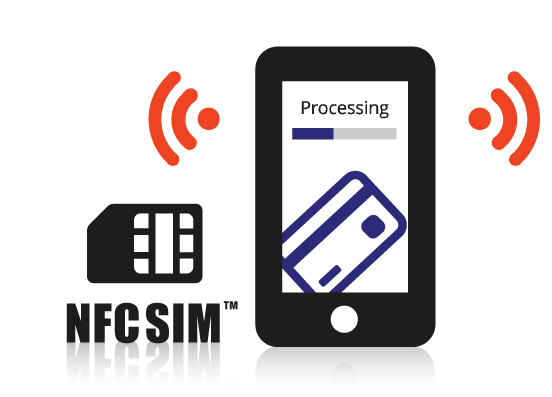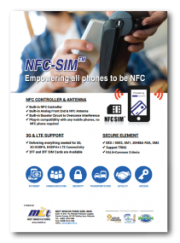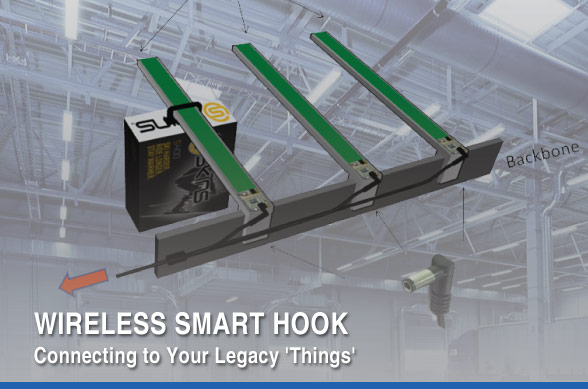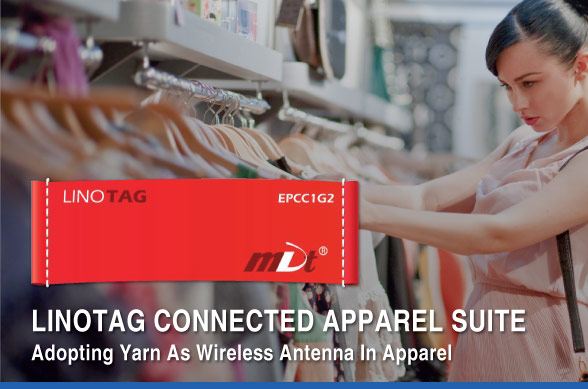
NFC-SIM implements a 13.56MHz antenna (needed for NFC to work), which conventionally impossible because the wavelength of 13.56MHz is 22meter, hence the antenna length too. The core technology focuses on miniaturization of antenna coupled with UICC contract chip, secure element, NFC chip with redesigned AFE (Analogue Front End). The design maintains telecommunication Card-OS, which allows MNO (mobile network providers) to perform initialization for the SIM card to commission on its network. In addition to that, applications built either by STK or WIB2.0 enables structured menu to be made available independent from mobile phone platform to provide applications such as mobile payment hence making NFC SIM universal on all phones.
Technically, our inexpensive circuit design of NFC-SIM resulted from low part counts of components which reduced PCB complexity. The design reduced signal interference during operation and the power required to operate NFC-SIM is slightly less than 1V.
To enhance the signal performance, we developed an algorithm which will calculate and determine the level of metal obstruction and hence the right RF power output to ensure uninterrupted reading. Essentially we made improvements to the AFE circuit by creating booster effect. In addition to that, we reduced the antenna length by 512th of a lambda and at the same time maintaining the Q factor. This achievement itself is one of the biggest technological breakthroughs in recent years. Very importantly, the design is microcontroller-based and it depends entirely on the efficiency of our firmware algorithm to also achieve the following:
- Reducing number of passive components and creating more space to antenna
- Programmable ROM which is uniquely customizable to enable a telco to provide its own applications [FLEXIBLITY]
- Draws minimal power from the opposite side of SIM card via UICC interface and at the same time provide data communication to the SIM IC, which enables any handset to access FRID functionality from the phone.
- Lightweight design compatible with standard mini-SIM and micro-SIM
NFC CONTROLLER & ANTENNA
Built-in NFC Controller
Built-in Anolog Front End & NFC Antenna
Built-in Booster Circuit to Overcome Interference
Plug-in compatibility with any mobile phones, no NFC phone required
SECURE ELEMENT
DES / 3DES, SM1, 2048bit RSA, SM2
Support TRNG
EAL5+Common Criteria
3G & LTE SUPPORT
Delivering everything needed for 2G, 3G HSDPA, HSDPA+ LTE Connectivity
2FF and 3FF SIM Cards are Available

NFC-SIM allows MNOs to add value added services into existing voice, video, data services which the margin is thinning despite daily revenues can be up to tens to hundreds of millions depending on subscriber base. NFC SIM maintains normal GSM / UMTS / LTE communications, but at the same time adds the missing front-end link, which is secured transaction for monetary applications namely mobile payment. Today, many MNOs have already created independent cashless platform to allow applications such as prepaid credit transfer, money remittance, and retail purchase. NFC SIM will allow more widespread adoption because the availability to physically transact securely with merchants, hence creating a new level of monetary / payment service held and control by MNOs.
Over the past years, many similar solutions are created mainly on 2.45GHz, while physically it work the same and actually easier to make into SIM because the wavelength is shorter, it fails to conform to the platform where all banks and EMV have adopted, which is NFC 13.56MHz. With new NFC SIM, MONs have options not only to roll out proprietary micro payment services, also optionally co-brand with banks using EMV platform to tap into the existing payment debit card and credit card infrastructure and ecosystem worldwide. This is possible with the adoption of EAL5+ common criteria security chip in the NFC SIM, making it secured enough for banking applications.







NFC-SIM allows MNOs to add value added services into existing voice, video, data services which the margin is thinning despite daily revenues can be up to tens to hundreds of millions depending on subscriber base. NFC SIM maintains normal GSM / UMTS / LTE communications, but at the same time adds the missing front-end link, which is secured transaction for monetary applications namely mobile payment. Today, many MNOs have already created independent cashless platform to allow applications such as prepaid credit transfer, money remittance, and retail purchase. NFC SIM will allow more widespread adoption because the availability to physically transact securely with merchants, hence creating a new level of monetary / payment service held and control by MNOs.
Over the past years, many similar solutions are created mainly on 2.45GHz, while physically it work the same and actually easier to make into SIM because the wavelength is shorter, it fails to conform to the platform where all banks and EMV have adopted, which is NFC 13.56MHz. With new NFC SIM, MONs have options not only to roll out proprietary micro payment services, also optionally co-brand with banks using EMV platform to tap into the existing payment debit card and credit card infrastructure and ecosystem worldwide. This is possible with the adoption of EAL5+ common criteria security chip in the NFC SIM, making it secured enough for banking applications.







NFC SIM is not to be confused with SIM card that becomes secure element to NFC phone because those SIM cards do not contain NFC frontend, and they depend heavily on mobile phone with NFC function, normally premium phones. Our product can be used in any phone, and model, any market and country without problem. In other words, it is an open platform which is compatible to all existing system.
MDTi offers Trusted Service Manager and Electronic Data Collection Terminal to help MNOs to rollout mobile payment service. A mobile payment system should be bulit around a TSM to handle challenge-response services, subscribers management, and also over the air updates (OTA). TSM also allows scalability to many other NFC applications such as transportation, loyalty, and advertising.





















